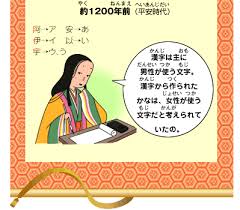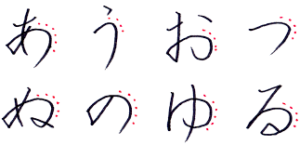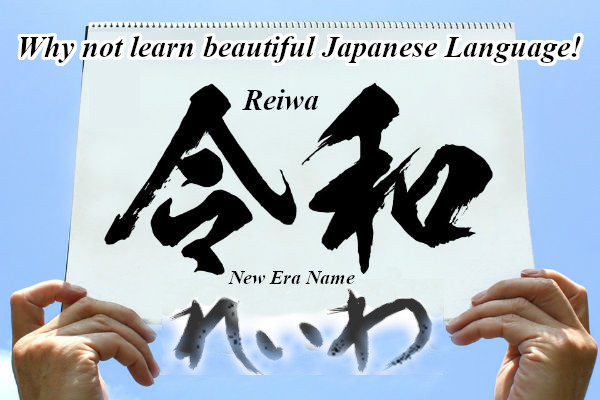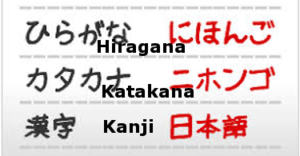Mina-san Konnichiwa (Hello everyone), today’s topic is ” Nihongo (Japanese language) ” desu.
Soredeha, sassoku Nihongo wo hajimemashou (So let’s start Japanese language, Nihongo).
Ogenkidesuka? (How are you?)
Nihongo kyoushitsu ni Youkoso (Welcome Japanese language class)
As almost all of you know that we will have the 2020 Tokyo Olympic games in two years and a half (this blog written on Jan 2018).
Besides being excited by the game itself, you would be much more enjoyable if you could speak and understand Japanese language when shopping, traveling to the places of interest in Japan.
No matter what kind of foreign language when you try to learn, it is the only way that you practice, practice it everyday.
Daijyoubu (No problem) because we have plenty of time, a little over two years until when you use the Japanese.
Dakara Nihongo no benkyo wo yarimasho (So let’s start learning.)
Contents
Nihongo (Japanese language) has different three letters, Kanji, Hiragana, and Katakana
There are 3 character sets in Japanese language; Kanji, hiragana, and katakana.
First, Kanji are historically from China around 2,000 years ago. In those days, Kanji characters imported from China were used as the sole method of writing and reading only by male Japanese.
Nowadays, children learn about 1000 kanji in elementary school in Japan.
After the start of the Heian period (794~1192), some people began writing these Kanji in a radically simplified way. And then,towards the end of the 9th century, the altered version became Japan’s own script, Hiragana.
The development of Hiragana owes much to the ladies of the Imperial Court. At that time, the main focus of education was to study Chinese classics.
However, that kind of education was considered unnecessary for women, which actually gave them the freedom to modify and simplify Kanji characters and use them to write poems and letters.

Hiragana is the most frequently used component of the Japanese writing system. It’s distinguished by its many curved lines and rounded shapes.

This syllabic script was developed by aristocrats about 1,100 years ago in the Heian period. It eventually evolved into an art form that vividly embodies the Japanese sense of beauty.
In the meanwhile, Katakana was created mostly by erudite monks for auxiliary script to the Kanji around 9th century and nowadays they are used for the new words imported from the foreign countries.

What’s Honorific language (keigo)?
Often referred to in English as “polite speech” or “honorifics”, “Keigo or Teineigo“in Japanese. The Japanese language has an extensive system of honorific language to show respect by the speaker to the addressee.
Keigo in the broad sense refers to the entire system of speech levels. In its narrow sense Keigo means “terms of respect” and refers to honorific words and expressions.
Also, this seems to be the fact that misuse of Keigo connotes the lack of intelligence and culture in a person.
In speaking, a choice is made as to the degree of politeness to be expressed. Depending on the status of the speaker relative to the addressee and on the context of the conversation, a simple question can be phrased in as many as two dozen different ways.
Choice of speech style
The speech style is basically determined by the status of the speaker and the addressee and the degree of intimacy between them.
The genaral rule is that when the addressee is of higher status than the speaker, or when the two are not very intimate, the polite style (with desu or masu -verb forms) is to be used, and so on.
I think this is one of the example of Keigo that we put “san” after either surname or first name to respect them.
But this is a little strange or odd for people who don’t have such a custom when you call someone’s name, e.g. Smith, John and/or Patric and the like, but in Japan, we have a habit of putting “san” after their name like Smith-san, John-san, Patric-san and so on.
For younger male children, we also make it a practice of putting “kun” instead of “san”.
I definitely agree to the point that you would be intricated regarding this Keigo after you’ve read the articles.
Telling the fact that even we Japanese are sometimes at a loss what I should express something such a, such a occasion in daily life.
Only solution to that is just everyday practice. So let’s learn with the following video, “Naraimasho Nihongo wo!” (Let’s learn Japanese language.)
Finally, we have “Hiragana” and “how to write Hiragana No.2”” website which is recommendable to visit, Arigato (thanks)”
Soredeha Nihongo no Benkyo Ganbatte Kudasai
(Good luck on learning Japanese language)



